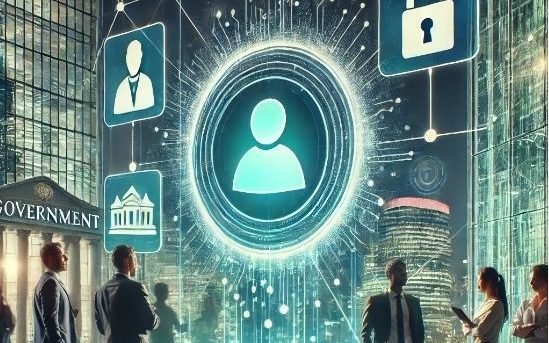In 2024, one of the top trends in government technology is the rise of digital identity ecosystems. These ecosystems, which include digital identity wallets and other secure authentication technologies, are increasingly being adopted by governments to streamline service delivery and enhance security. By 2026, it is predicted that 500 million users globally will regularly use digital identity wallets, which allow citizens to authenticate themselves, prove their identity, and access services through smartphone-based applications. For government executives and leaders, this trend represents a major opportunity but also comes with inherent risks that must be managed carefully.

Opportunities in Digital Identity Ecosystems
The adoption of digital identity ecosystems presents significant opportunities for governments to improve service delivery and efficiency. One key benefit is the potential to streamline access to public services. Rather than relying on multiple login systems or physical documents, citizens can use a single, secure digital identity to interact with government agencies. This can improve user experience, reduce administrative burdens, and lower costs associated with managing identity verification through traditional means.
Additionally, digital identity ecosystems can enhance security. Digital identity wallets, often built on distributed ledger technology, offer a more secure method of identity verification than older, paper-based systems. With cryptographic protections and decentralized validation methods, these systems reduce the risks of identity fraud and unauthorized access to sensitive data. Governments can leverage these ecosystems to protect citizens’ personal information more effectively, increasing public trust in government services.
Furthermore, digital identity ecosystems can support the digital transformation of government services. By integrating identity verification into broader digital platforms, governments can expand the range of services they offer online, increasing accessibility and efficiency. As governments move toward more platform-based solutions and cloud-native capabilities, digital identity will play a central role in ensuring secure, user-friendly access to these services.
Risks and Challenges
Despite these opportunities, the implementation of digital identity ecosystems also comes with risks. One major challenge is ensuring that these systems are secure and resilient against cyber threats. While digital identity wallets offer enhanced security features, they are also targets for hackers. A breach in a government digital identity system could have widespread consequences, affecting millions of users and undermining trust in government technology. As such, governments must invest in adaptive security models that can continuously monitor and respond to evolving threats.
Another risk lies in digital inclusion. Not all citizens may have equal access to the technology required to use digital identity wallets, such as smartphones or stable internet connections. Governments must ensure that digital identity systems are designed to be accessible to all citizens, regardless of their socioeconomic status or geographic location. Failure to do so could exacerbate existing inequalities in access to government services.
In addition to security and inclusion risks, there is also the challenge of governance and interoperability. As more governments adopt digital identity ecosystems, ensuring that these systems are interoperable across borders and sectors will be crucial. Governments must work together to develop standards and frameworks that allow digital identities to be recognized across different jurisdictions and industries. Without interoperability, the full potential of digital identity ecosystems may not be realized.
Balancing Opportunities and Risks
To maximize the opportunities and mitigate the risks of digital identity ecosystems, government leaders need to adopt a holistic approach. This includes investing in secure infrastructure, developing clear governance frameworks, and ensuring that systems are accessible and inclusive. AI and automation can also play a role in managing these ecosystems, helping governments to analyze data, monitor for security threats, and optimize service delivery.
As digital identity ecosystems become more prevalent, they will form a cornerstone of governments’ broader efforts to modernize and digitize public services. By carefully balancing innovation with security and inclusion, government executives can harness the power of these systems to deliver better, faster, and more secure services to citizens.
Dr. Rhonda Farrell is a transformation advisor with decades of experience driving impactful change and strategic growth for DoD, IC, Joint, and commercial agencies and organizations. She has a robust background in digital transformation, organizational development, and process improvement, offering a unique perspective that combines technical expertise with a deep understanding of business dynamics. As a strategy and innovation leader, she aligns with CIO, CTO, CDO, CISO, and Chief of Staff initiatives to identify strategic gaps, realign missions, and re-engineer organizations. Based in Baltimore and a proud US Marine Corps veteran, she brings a disciplined, resilient, and mission-focused approach to her work, enabling organizations to pivot and innovate successfully.





Leave a Reply
You must be logged in to post a comment.